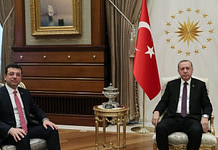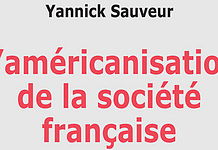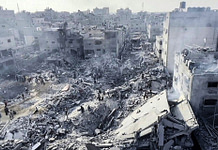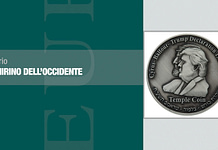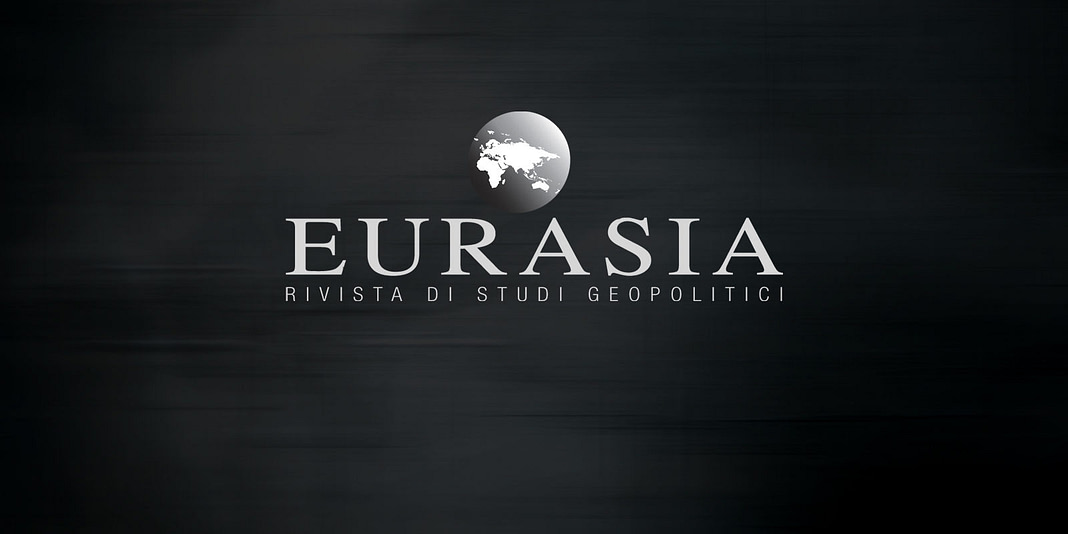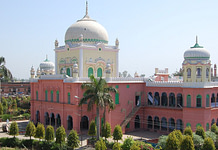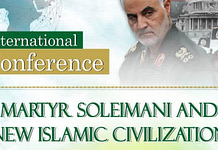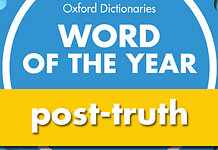The Russian Far East is the biggest of the eight federal districts of Russia. It is composed by four provinces (oblasts), one of which is autonomous, three krais (territories), an autonomous okrug (district), and the Sakha (Yakutia) Republic. The district comprises a wide range of landscapes and environments, from the temperate forests of the Pacific Coast to the tundra of the far North and the volcanoes of Kamchatka. And, further than ethnic Russians, a number of indigenous ethnic groups live there, such as the Yakuts – the northernmost Turkic ethnos –, the Evenks, the Chukchi and the Ainus. There are also many ethnic Koreans, living mainly in Sakhalin and descending from those deported in the southern part of the island during the Japanese domination, and a Chinese community, which is growing. Nevertheless, the district is largely underpopulated, and its residents (around 6,300,000 in 2013) are decreasing in spite of the slightly positive demographic balance of the latest years.
In the Russian Far East, nevertheless, there is plenty of economic opportunities. The role of this region in the Russian economy is still negligible, but its economy did not stop growing even during the 2009 crisis, when its GDP grew by 1.5% while the whole country’s one slumped by 7.6% (1). The district is very rich in raw materials, in particular oil, natural gas, gold and diamonds: Sakha and the Sakhalin Island are in this sense two of the richest areas in the whole Russia. But nowadays the greatest resource is probably its geographical position. Not far away from here we find three of the most dynamic countries in Eastern Asia: China, Japan and South Korea. The former one is now the second economy in the world and its economic growth, despite being no longer double-digit as some years ago, might still cause it to become the first economic power in the world in the next decades. Japan is one of the richest countries of the globe, and, in spite of the bites of the crisis and a consequent slight worsening of its position in the global ranking, is still the fourth economy. South Korea, further than being a high-income country, is also a renowned leader in many key economic sectors, such as high technology and car industry. As the importance in the world economy of Eastern Asia, and in general of the Pacific Rim, is likely to grow in the future, the opportunities are great. According to some estimates, for instance, if only 2% of the global importations of the Asian-Pacific countries were directed through the Russian Far East, the economy of the latter would grow by 6% a year (2).
After years of neglect, the Far East is now receiving a growing attention by the federal authorities. The Minister for the Development of the Far East was established in 2000, and since then the government allocations to the region have dramatically soared, shifting from $35 million up to $2.3 billion in 2012 (3). Still in 2012, Vladivostok hosted the 24th APEC (Asian-Pacific Economic Cooperation) Summit, and the city underwent a great renewal. Several new infrastructures were built, such as the impressive Russky Bridge – the longest cable-stayed bridge in the world –, the Zolotoy Bridge over the Zolotoy Rog, a bay named after the Istanbulite Golden Horn which divides Vladivostok into two parts, and the new airport terminal.
This is actually not the first time that the Pacific Russian metropolis is devoted such a great attention. In 1959, for instance, the then-Secretary General of the Communist Party Nikita Khrushchev pledged to make the city “better than San Francisco”; but unfortunately the enormous amount of money which flew to the city were invested mainly in building hundreds of “khrushchyovki (4)” and a funicular railway somehow inspired by the famous San Francisco Cable Car (5). Communism is now over, but not the grandeur of the official declarations. More than fifty years after Khrushchev, indeed, the Minister for the Development of the Far East Aleksandr Galushka announced the future creation of Special Economic Zones (SEZ), industrial, technological and agricultural parks in the region, with the target of “making the Russian Far East more attractive for business than Hong Kong or Singapore” (6). The plans, however, seem definitely more serious now: the structures on the Russky Island which hosted the APEC Summit, for instance, are now the campus of the Far Eastern Federal University. And, although often still unfavourable, the investment climate in Russia is rapidly improving: in 2013 the country rose of 19 positions in the Doing Business report published annually by the World Bank, and the target of bringing Russia among the twenty best countries for investments by 2018 does not seem so far anymore (7).
Unsurprisingly, the international interest for the Russian Far East is increasing. Chinese investors are undoubtedly the most active in the area, and in spite of a certain fear for their takeover of the region, they actually found a very welcoming climate. Further than hydrocarbons and mining, a sector in which they are particularly active is agriculture. In the Primorsky Krai, in particular, they owe around 6,000 km² of land – more than a fourth of Slovenia’s territory –, and the Chinese-owned companies export in the whole Pacific region. A number of Chinese people, moreover, work in the Russian Far East – salaries are still far higher in Russia than in China –, although only a few of them have permanently settled into the region (8). The increasing ties between Russia and China are favoured also by the growing cooperation in the monetary sector. In 2009 the direct convertibility between the ruble and the yuan was introduced, and the latter is now the third most popular reserve currency in Russia after the dollar and the euro. Since November 2013, the Russian citizens can visit the border town of Suifenhe (about 200 kilometres from Vladivostok) without a visa, and starting from the following month the use of ruble has been allowed in Suifenhe, which has then become the first Chinese city to accept a foreign currency (9). But the most important Russian-Chinese deal is the agreement signed in 2010 binding the Russian oil giant Rosneft to export 300 million tonnes of oil to China until 2030 and to build a refinery in Tientsin (10).
But investors interested in the Russian Far East do not come only from China. Also in order to avoid an excessive reliance on investments from their powerful neighbour, the Russian authorities have been trying to attract investments also from other countries, in particular, as has been said, Japan and South Korea. So far, the investments from these countries are mainly confined to the hydrocarbon sector. Two of the four shareholders of the Sakhalin Energy Company Ltd., which owns the Sakhalin oil and gas fields, are the Japanese Mitsui and Mitsubishi (11). These fields serve mainly Japan and South Korea, with the former now planning a pipeline between Sakhalin and the Ibaraki Prefecture, near Tokyo (12). Nevertheless, last December a Japanese bank proposed to set up an agricultural SEZ between the Khabarovsk province and the Primorsky Krai. The Japanese government will be offered very advantageous fiscal conditions: the profit tax will amount to 2% during the first 5 years and to 15,5% in the following ones, while the exportations will be duty-free (13). Meanwhile, near Vladivostok, the Koreans have opened a Hyundai Electrosystems plant, which now employs around 300 high-specialized workers, both Russians and Koreans (14), while in Siberia an agricultural venture has rented around 100,000 hectares of land in order to farm soybean and other crops (15). Other projects concern the upgrade of the Vanino Port, not far away from Khabarovsk – the capital of the Far Eastern Federal District –, proposed by the steel conglomerate POSCO, and the construction of a shipbuilding facility in the port. A certain interest in the region has been shown also by many Indian potential investors (16).
Nevertheless, the reality is not always positive. The situation for investments in the region is definitely improving, but the Far East is still far away from becoming a new Hong Kong or Singapore. The need for foreign investments to relaunch the area is obvious, especially in agriculture, but the workers are rather few, especially the high-specialized ones, and “importing” them from the investors’ home countries is rather difficult because of the bureaucracy. According to a South Korean high official, for instance, there is a number of customs and labour issues to be discussed with the counterpart (17), while the development of Russian-Japanese business ties is bound to the normalisation of the relations between the two countries. So far, only Chinese entrepreneurs seem to come massively in the region (18). And, what’s worse, some Chinese investors seem to consider the Russian Far East only a source of raw materials, without any interest for its economic development. The former Minister for Russian Far East Viktor Ishayev, for instance, stated that many Chinese traders buy fish stocks at fixed prices and process them at home, and so far any request to move production on the Russian side has been fruitless (19).
The stake is very high, as it involves not only the development of a region that, until a few years ago, was rather backward, but also the future international collocation of Russia. The risk that the “Great Mother” will become the weaker party of a Sino-Russian axis, or a mere raw material supplier of Beijing, is clear, and in order to avoid it Russia needs structural reforms and a well-defined Eastern Asian policy. The stake is also very high for the United States and, in general, for all those countries interested to contain the growing Chinese role in Eastern Asia. During the conference “Reshaping Eurasia’s Future: Russia, China, and the EU” held in Washington on 25th September 2013, Rensselaer W. Lee, a senior expert of Eurasia, stated that “the Chinese economic influence will grow exponentially in the next years” and that it is necessary for the US, Japan, South Korea and also the EU to invest in the region in order to strengthen their economic, cultural and political influence on the Russian Far East. Lee states that “this strategy is not meant to oust China from the region, but rather to bring the West there”, though it is hard to believe that the former is not at least one of the main goals of the strategy: Lee himself stated that the Western countries, Japan and South Korea should exploit their advantages over the Chinese, especially their technological ones (20).
As known, the US are progressively losing their interest for the Middle East and shifting their focus towards the Far East, but containing China would be very difficult without the Russian support. The Asian powers are aware of this, and so probably Obama. Unfortunately, the relations between Russia and the West are not at their best. There is a number of bones of contentions between the USA, and often the Western world as a whole, and Russia, and the various “resets” of the American foreign policy towards Russia, so far, have not really worked. Furthermore, Russia seems more oriented towards China rather than towards its antagonists. There is a number of common issues between the two countries – last but not least, the containment of the American influence –, and Putin has often called China “a strategic partner”. Such feelings are well rewarded by China: on the eve of the Sochi Olympic Games, while the Western newspapers published several inquiries about homophobia in Russia and the uncompleted olympic infrastructures, the Chinese ones were full of articles praising the harmonious coexistence between the two countries (21).
On the other hand, China and Russia are partners but not allies. Both countries have great power ambitions, especially China, and their strategic interests, further than being different, are nonetheless sometimes divergent. Both countries are actually worried that the partner could become too powerful. Russia, for instance, has refused the Chinese proposal to create a free trade area among the Shanghai Group members, while the possibility of Vietnam – whose relations with China are traditionally tense – to join the Eurasian Customs Union is also, if not mostly, a way for both countries to protect themselves against the growing Chinese influence. China, on the other hand, has allegedly adopted a divide-et-impera policy towards Russia and Japan, and this is certainly one of the main underlying causes of their efforts to improve their relationships (22), traditionally tense, but definitely improved during the last Putin’s presidency, and some experts have even argued that Japan is ready to accept a compromise over the Kuril Islands (23). The situation, nevertheless, is not unlikely to change in the future.
Fyodor Lukyanov, a senior Russian diplomat also collaborating with many journals of foreign affairs, maintains that Russia should pay a greater attention to its relations with the Asian countries. In his view, creating a common economic space from Europe to the Far East “is a much more important goal than battling with the EU for Ukraine or any other post-Soviet country”, because the stakes in Eastern Asia are far higher than those in Europe (25). Someone has even argued that Russia should shift its centre of gravity towards the Russian Far East and build a new capital on the Pacific Coast, similarly to what the Tsar Peter the Great did in the beginning of the 18th Century, when he moved the capital to Saint Petersburg, but in the opposite sense. Nevertheless, would this be really possible for Russia? The obstacles are not only of economic nature, but also cultural. In spite of being located mainly in Asia, Russia is still a European country, almost all the most important pages of the Russian history were written in Europe, and its culture, despite not being “Western” and having received a certain Asian influence (mainly Turkic and Mongolian), is still far more European than Asian. A stronger Asian policy and the development of the Russian Far East are obviously two musts, but the traditional landmarks of Russia are others. And, even if Russia would finally win its bet to make its Far East “more attractive for investments than Hong Kong or Singapore”, for most Russians this would be probably less important than, for instance, keeping Kiev under its own sphere of influence.
*Giuseppe Cappelluti has a Master Degree in Foreign Languages for the International Communication and Cooperation from the University of Bergamo, Italy and a Bachelor Degree in Sciences for the Intercultural Mediation from the University of Bari, Italy. In 2010, he studied six months in the University of Tartu, Estonia, with the ERASMUS programme.
note
1. www.gks.ru/free_doc/new_site/vvp/din98-10.xls
2. http://www.rg.ru/2013/11/01/plani-site-anons.html
3. http://rbth.ru/business/2013/02/09/russias_far_east_struggles_to_modernize_its_economy_22643.html
4. The krushchyovki (from Khrushchev and “trushchovy”, hovels) are popular blocks of flats built with prefabricated materials.
5. http://www.kp.ru/daily/24371/554071/
6. http://www.rg.ru/2013/12/31/atr.html
7. http://www.doingbusiness.org/data/exploreeconomies/russia/8. http://www.reuters.com/article/2013/12/22/us-china-russia-agriculture-insight-idUSBRE9BL00X20131222
9. http://www.kommersant.ru/doc/2364129
10. http://tengrinews.kz/russia/rossiya-uvelichit-eksport-nefti-v-kitay-cherez-kazahstan-v-2014-godu-229204/
11. http://www.sakhalinenergy.com/en/company/about_company/management_structure.wbp
12. http://www.energyglobal.com/news/pipelines/articles/Japanese_energy_companies_express_interest_in_Sakhalin_to_Hokkaido_gas_pipeline.aspx#.Uwg38IVkZpE
13. http://www.pravda.ru/economics/agriculture/farming/25-12-2013/1186722-japan-0/
14. http://www.zrpress.ru/markets/primorje_30.01.2013_59040_kompanija-khende-elektrosistemy-obosnovalas-v-arteme-na-novom-zavode.html
15. http://www.zrpress.ru/markets/primorje_30.01.2013_59040_kompanija-khende-elektrosistemy-obosnovalas-v-arteme-na-novom-zavode.html
16. http://www.koreaherald.com/view.php?ud=20130609000328
17. http://www.koreaherald.com/view.php?ud=20130609000328
18. http://www.reuters.com/article/2013/12/22/us-china-russia-agriculture-insight-idUSBRE9BL00X20131222
19. http://rbth.ru/business/2013/02/09/russias_far_east_struggles_to_modernize_its_economy_22643.html
20. http://primamedia.ru/news/economics/09.12.2013/321074/dalniy-vostok-rossii-obladaet-ogromnim-ekonomicheskim-potentsialom-ekspert-iz-s.html
21. http://temi.repubblica.it/limes/senza-obama-il-palcoscenico-di-sochi-2014-e-per-la-cina-di-xi/57837
22. http://www.foreignaffairs.com/articles/140288/fiona-hill/gang-of-two
23. http://www.dw.de/russo-japanese-ties-thaw-after-long-freeze/a-17375834
24. http://en.ria.ru/columnists/20131118/184783108/Uncertain-World-Russia-Shifting-the-Focus-from-Europe-to-Asia.html
Questo articolo è coperto da ©Copyright, per cui ne è vietata la riproduzione parziale o integrale. Per maggiori informazioni sull'informativa in relazione al diritto d'autore del sito visita Questa pagina.



